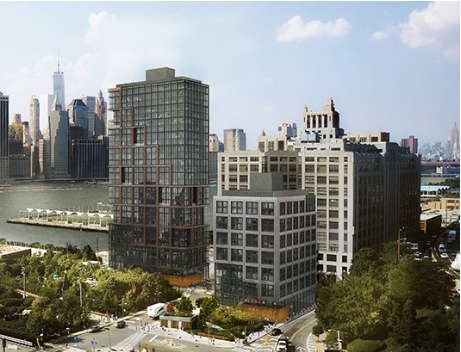Brooklyn Heights Association: New data from city shows Pier 6 development unnecessary
‘Developments worth more than park estimated’

The Brooklyn Heights Association says that new city figures show that two residential towers planned for Brooklyn Bridge Park’s Pier 6 (above, center and left) are not financially necessary. Rendering courtesy of ODA-RAL Development Services - Oliver's Realty Group
The Brooklyn Heights Association (BHA) says that property valuations released by the city’s Finance Department last month show that two residential towers planned for Brooklyn Bridge Park’s Pier 6 are not financially necessary.
The city’s valuations show that private high-end developments already built in the waterfront park will bring in much more money than the park corporation projected, BHA says — rendering the Pier 6 project unwarranted.
BHA filed a lawsuit to block the Pier 6 development on July 7; the next appearance is scheduled for March 6. UPDATE: The date has been changed to April 12.

Brooklyn Heights
View MoreRead the Brooklyn Height's Press and Cobble Hill News. Find out more about Brooklyn Height's History here.